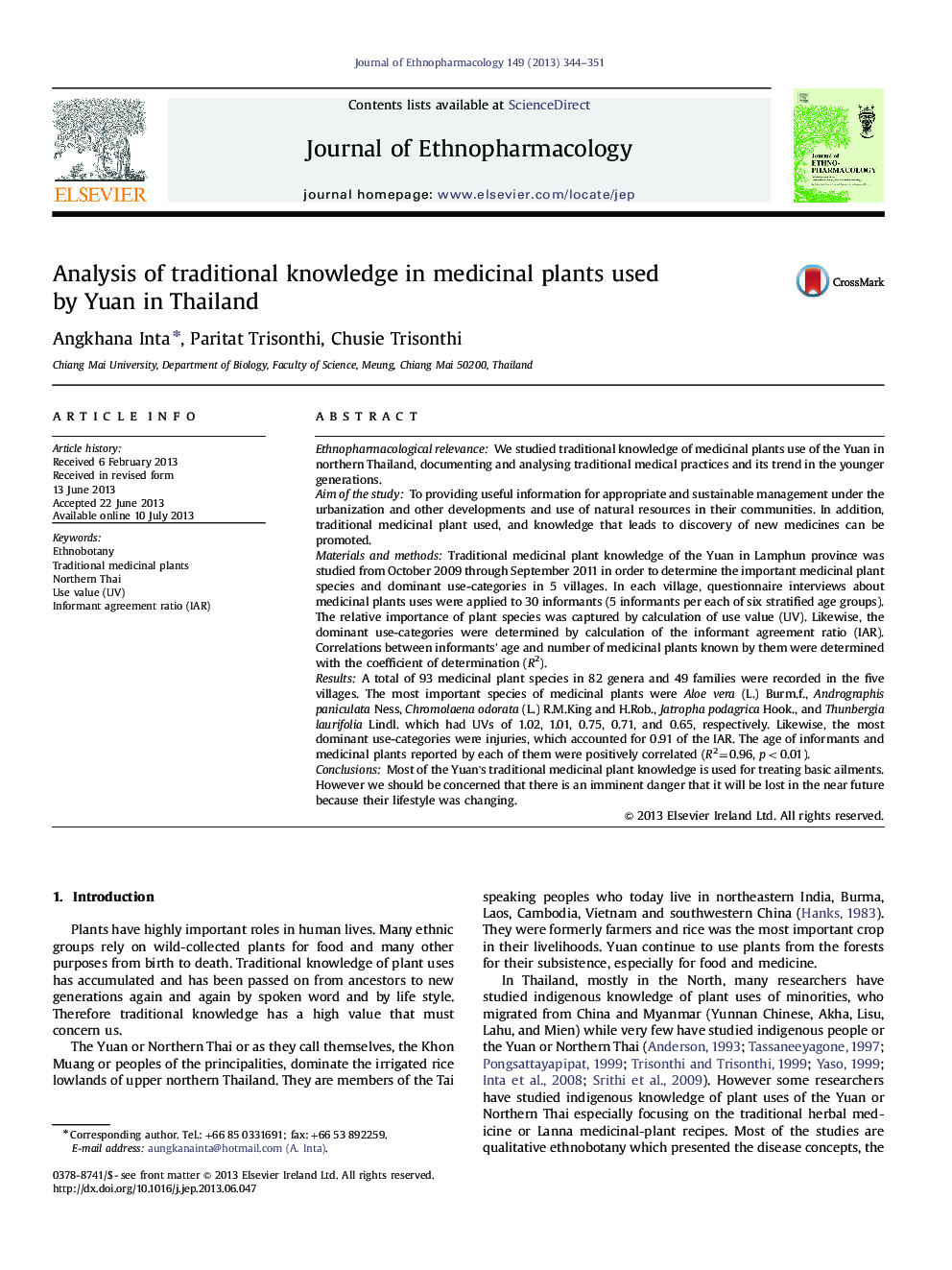| کد مقاله | کد نشریه | سال انتشار | مقاله انگلیسی | نسخه تمام متن |
|---|---|---|---|---|
| 5837095 | 1123957 | 2013 | 8 صفحه PDF | دانلود رایگان |
Ethnopharmacological relevanceWe studied traditional knowledge of medicinal plants use of the Yuan in northern Thailand, documenting and analysing traditional medical practices and its trend in the younger generations.Aim of the studyTo providing useful information for appropriate and sustainable management under the urbanization and other developments and use of natural resources in their communities. In addition, traditional medicinal plant used, and knowledge that leads to discovery of new medicines can be promoted.Materials and methodsTraditional medicinal plant knowledge of the Yuan in Lamphun province was studied from October 2009 through September 2011 in order to determine the important medicinal plant species and dominant use-categories in 5 villages. In each village, questionnaire interviews about medicinal plants uses were applied to 30 informants (5 informants per each of six stratified age groups). The relative importance of plant species was captured by calculation of use value (UV). Likewise, the dominant use-categories were determined by calculation of the informant agreement ratio (IAR). Correlations between informants' age and number of medicinal plants known by them were determined with the coefficient of determination (R2).ResultsA total of 93 medicinal plant species in 82 genera and 49 families were recorded in the five villages. The most important species of medicinal plants were Aloe vera (L.) Burm.f., Andrographis paniculata Ness, Chromolaena odorata (L.) R.M.King and H.Rob., Jatropha podagrica Hook., and Thunbergia laurifolia Lindl. which had UVs of 1.02, 1.01, 0.75, 0.71, and 0.65, respectively. Likewise, the most dominant use-categories were injuries, which accounted for 0.91 of the IAR. The age of informants and medicinal plants reported by each of them were positively correlated (R2=0.96, p<0.01).ConclusionsMost of the Yuan's traditional medicinal plant knowledge is used for treating basic ailments. However we should be concerned that there is an imminent danger that it will be lost in the near future because their lifestyle was changing.
The correlation between age interval and number of plant uses (R2=0.96 (p<0.01) indicates the high linear relation between age and number of plant use).172
Journal: Journal of Ethnopharmacology - Volume 149, Issue 1, 26 August 2013, Pages 344-351
